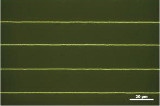- Home
- Research
- Education & Outreach
- Facilities
- Industry
Nanoscale Materials & Processes (TRG 1)
Co-Leaders
Thomas P. Russell and James J. Watkins
Participating Faculty
Fouad Aliev (Physics,UPR), Harry Bermudez (PSE), Alejandro Briseno (PSE), Carlos Cabrera (Chemistry, UPR), Kenneth Carter (PSE), Alfred Crosby (PSE), Todd Emrick (PSE), Sam Gido (PSE), Gregory Grason (PSE), (UPR), Thomas McCarthy (PSE), Matteo Pasquali (Chemical and Biomolecular Engineering, Rice) and Jonathan Rothstein (MIE)
TRG 1, Nanoscale Materials and Processes, addresses the materials systems and processes necessary for high reliability nanofabrication and supports fundamental research on the CHM's core technologies. Essential elements include the massively parallel generation of nanostructures, their functionalization to achieve desired physical or chemical properties, and the development of models and simulations to understand and, ultimately, predict the assembly process, system dynamics, transport and materials properties. The TRG also develops functional materials sets for applications in energy conversion and storage (batteries, PVs, fuel cells), separations and computing. The approaches employed reflect the unique expertise and achievements of the CHM, including directed self-assembly, additive driven assembly of hybrid nanocomposites, self-assembly of low cost templates from commodity components for high volume applications, 3-D replication techniques in which the hierarchical morphologies achieved in soft materials are replicated in inorganic materials without loss of fidelity, nanoimprint lithography and novel conformal and spray-on deposition techniques for nanostructured films.
Current TRG 1 Research
Developing New Materials and Processes for Nanoimprint Lithography (NIL)
- Researching thiol-ene polymers for use in NIL, including development of new substrate surface treatments to ensure adhesion as well as mold surface treatments for adequate release of the cured polymer.
- Measurement of the adhesion and release mechanisms of template-resist interfaces using a custom-designed instrument to quantify the development of residual stress during the imprint curing process, the separation force history, and the visual observation of the separation process. This work is ongoing for minimization of defects at sub-30nm length scales
- Study of embedded functionality in imprinted resists as a means to generate patterned semiconducting polymers, for use in optical devices, memory and logic element and new chemically responsive sensors
- New catalytic systems for aromatic coupling reactions for semiconducting polymer synthesis.
Improved Lateral Ordering in Thin Block Copolymer (BCP) Films
- Research objectives are templates and scaffolds for the fabrication of nanostructured materials and devices, including templates for patterned magnetic media.
- Research focusing on precise control of long range and positional order, as well as strong segregation in low molecular weight block copolymers, to achieve small domains and narrow domain size distributions, with low placement errors to meet industry requirements for manufacturing.
- Study of nanoimprinting processes to provide topological constraints for enhanced order, eliminating the need for substrate patterning.
- Study of capillary force lithography (CFL) to achieve better domain alignment.
- Research on strongly segregated block copolymer systems
- Study of etching processes to transfer patterns with tight size distributions into device substrates or masters for nanoimprint lithography.
Overcoming Cost and Technical Challenges for BCPs in Manufacturing
- Demonstration of new method for preparing well-ordered polymer melts using commercially available surfactants with homopolymers that can hydrogen bond with the PEO block.
- Further refinements are aiming at a general route to highly-ordered block copolymer morphologies from inexpensive components.
Mesoporous Materials
- Preparation of mesoporous titania films with vertically oriented nanochannels via phase-selective condensation of titanium alkoxides.
- Preparation of ordered mesoporous carbons, with potential applications in fuel cells.
- Electrochemical polymerization to deposit polythiophene on porous titania structures, for potential application in ordered heterojunction solar cells.
Supercritical fluid deposition (SFD)
- Conformal deposition of metals including Cu, Ru, Pt, Pd, Ni, Au, Co and their alloys upon high aspect ratio and sub-100 nm features.
- SFD processes for conformal deposition of metal oxide and mixed metal oxide films, including high k materials, for fabrication of high aspect ratio on-chip capacitors and memory elements.
Advances in Nanofabrication Processes
- Demonstration of high-fidelity 3-D replication of hierarchical polymeric structures to yield functional metal oxide, mixed metal oxide and carbon-based materials while preserving all the structural details of the template.
- Manufacturing opportunity to compress conventional deposition-pattern-etch-repeat cycles into a much more direct and cost-effective process sequence. One example is mesoporous silicate films for ultra-low dielectric constant (ULK) thin films with superior electrical and mechanical properties.
- Research on improved order and segregation of mesoporous silicates produced by the supercritical fluid replication process, to allow the development of materials with small (2-3 nm) pore sizes.
- Directed patterning of mesoporous silica films using templates doped with photoacid generators, through the contact mask lithography process, yielding micron-scale features without subsequent etching steps.
Ultrahydrophobic Surfaces and Materials
- Study of contact force lithography to generate topographically complex surfaces to probe the origins of ultrahydrophobicity.













